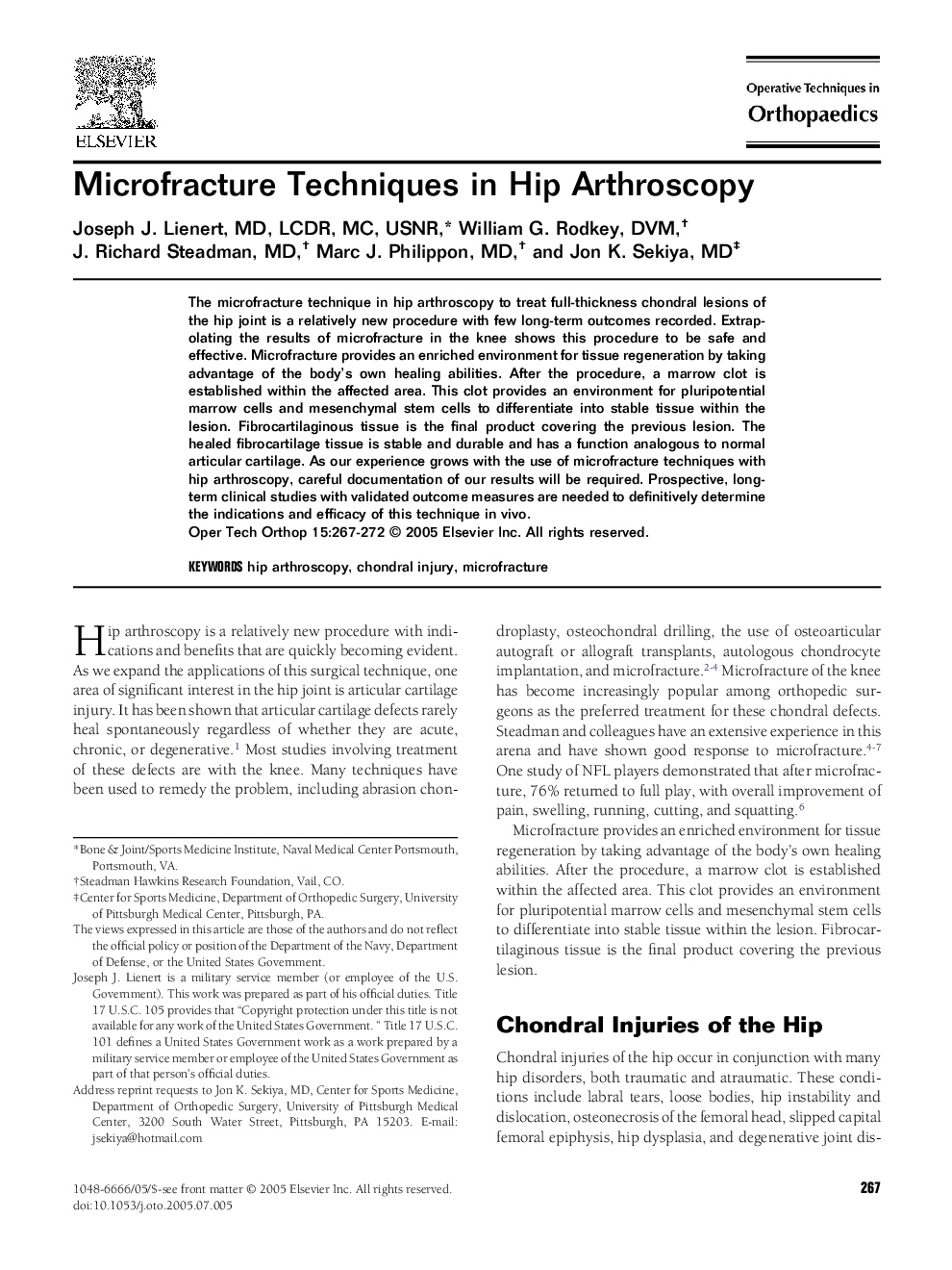| Article ID | Journal | Published Year | Pages | File Type |
|---|---|---|---|---|
| 9356864 | Operative Techniques in Orthopaedics | 2005 | 6 Pages |
Abstract
The microfracture technique in hip arthroscopy to treat full-thickness chondral lesions of the hip joint is a relatively new procedure with few long-term outcomes recorded. Extrapolating the results of microfracture in the knee shows this procedure to be safe and effective. Microfracture provides an enriched environment for tissue regeneration by taking advantage of the body's own healing abilities. After the procedure, a marrow clot is established within the affected area. This clot provides an environment for pluripotential marrow cells and mesenchymal stem cells to differentiate into stable tissue within the lesion. Fibrocartilaginous tissue is the final product covering the previous lesion. The healed fibrocartilage tissue is stable and durable and has a function analogous to normal articular cartilage. As our experience grows with the use of microfracture techniques with hip arthroscopy, careful documentation of our results will be required. Prospective, long-term clinical studies with validated outcome measures are needed to definitively determine the indications and efficacy of this technique in vivo.
Related Topics
Health Sciences
Medicine and Dentistry
Orthopedics, Sports Medicine and Rehabilitation
Authors
Joseph J. MD, LCDR, MC, USNR, William G. DVM, J. Richard MD, Marc J. MD, Jon K. MD,
